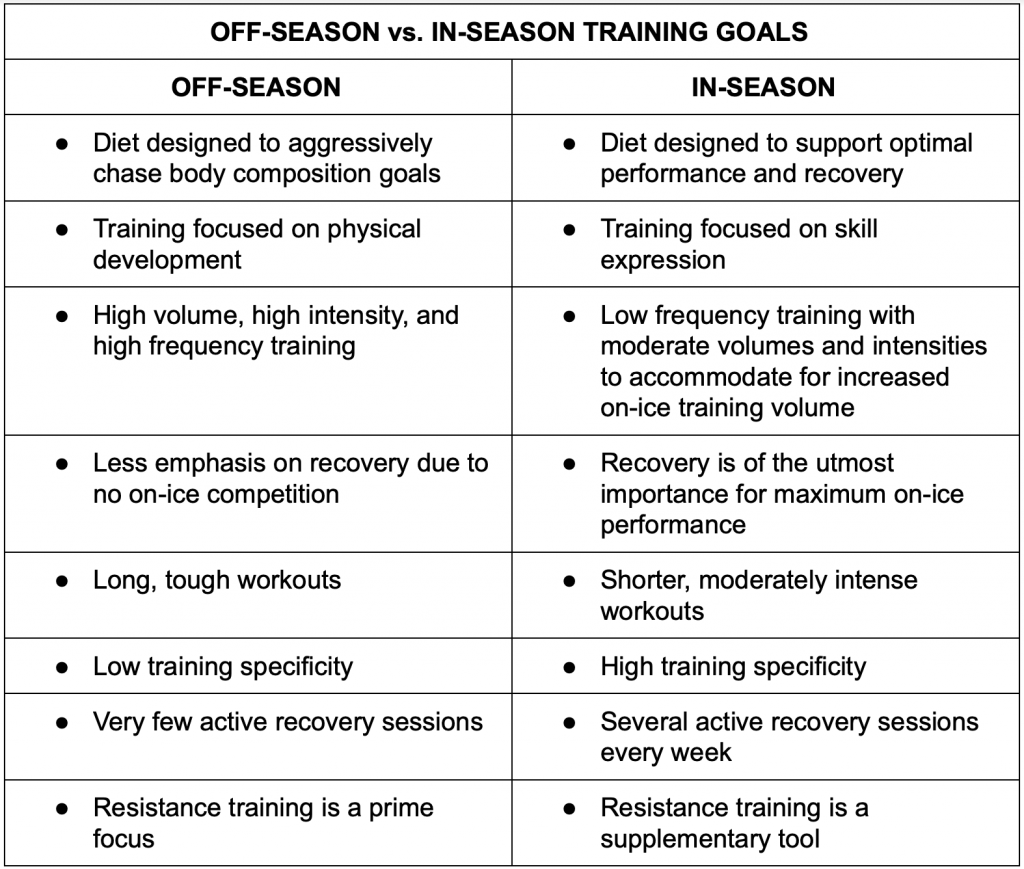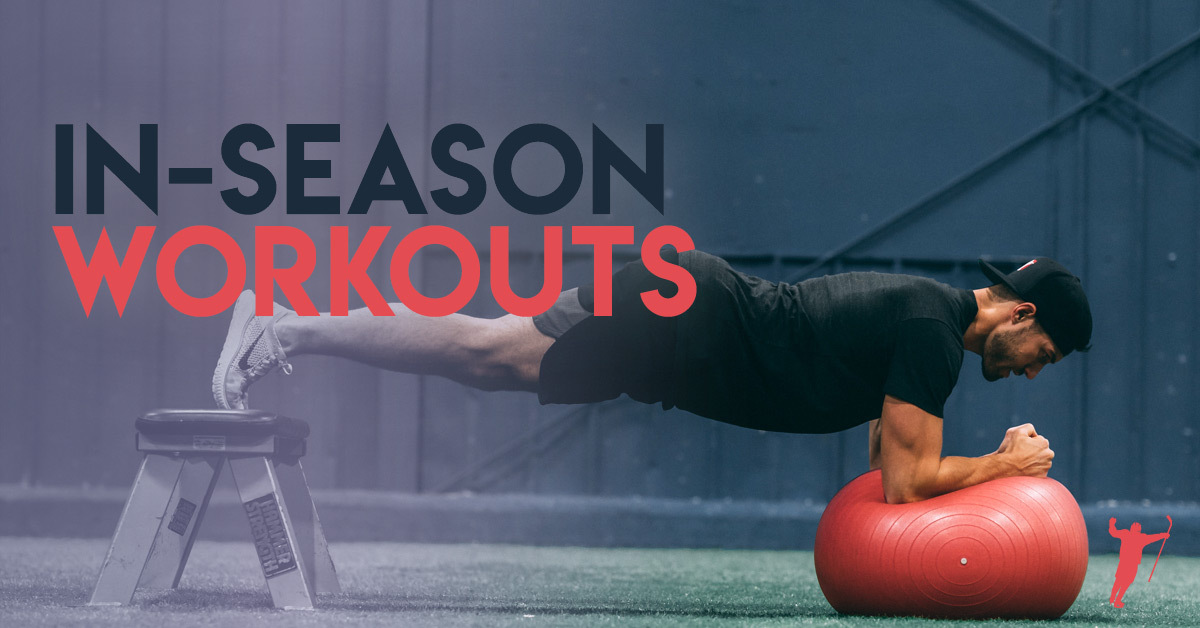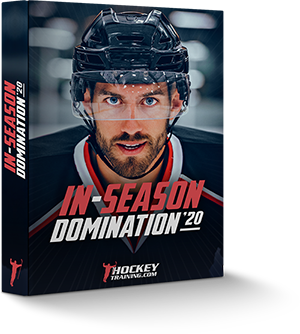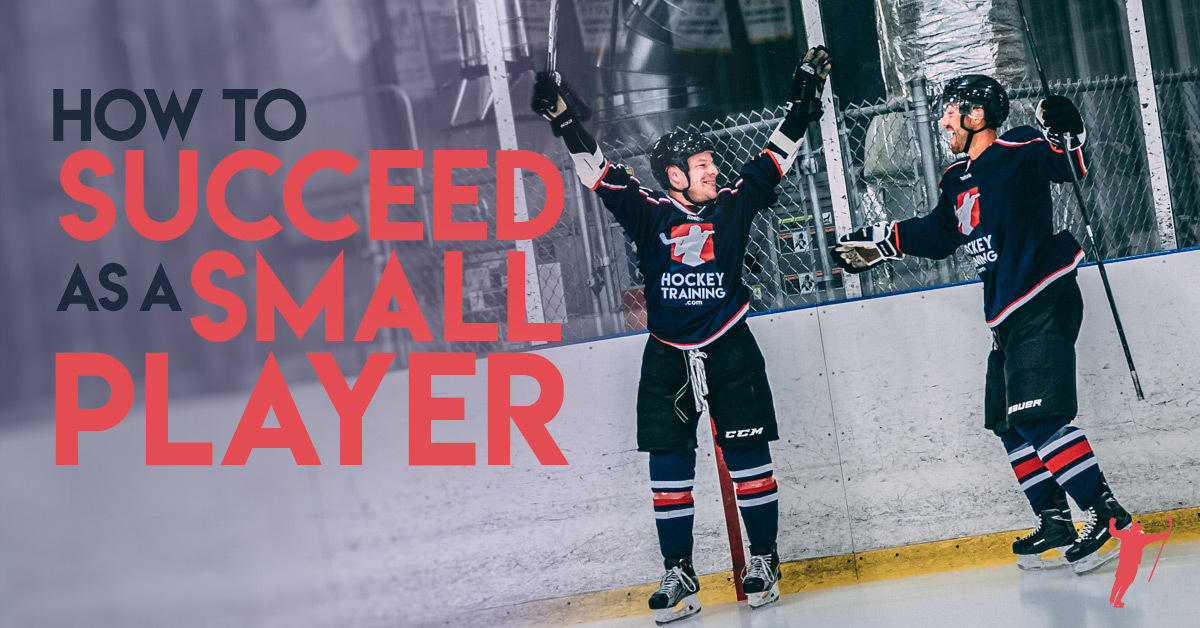In this article, I will unpack my NP3 Method of designing workouts that are specific to the demands of the hockey athlete during the in-season.
After reading this, you will not only know exactly how to train during the competitive season, you will also thoroughly understand the why behind in-season training, which puts you many steps ahead of your competition.
Why will you get so far ahead?
Well, most of your competition thinks it is acceptable to perform off-season workouts during the in-season. What they don’t know is that this is one of the biggest mistakes they could possibly make.
In-Season vs. Off-Season Hockey Training

The wrong workout at the wrong time can create a devastating impact on your hockey dreams. I’ve seen this happen a lot, and it’s tough to watch, because it’s not the hockey player’s discipline or effort that is hurting them, but where they are applying this discipline and effort.
A workout done at an incorrect time will create a poor outcome no matter how well that workout was originally designed. This is why you need to consider the primary differences between off-season and in-season training.
The off-season is the best time to build functional muscle, aggressively chase body composition transformation goals, and acclimate your body and joints to absorbing and producing more force.
Since you don’t have to be overly concerned about soreness and on-ice performance in the off-season, you can push your body much harder.
It’s OK to workout longer (60 to 90 minutes) and with higher volumes (i.e., sets and reps).
You can also incorporate slow negatives (i.e. eccentric training) and isometric holds, which are extreme strength builders but are too stressful to perform during the season.
You have nothing else at stake, so work toward getting bigger and functionally better for the season to come.
Additionally, the off-season is where we want to avoid too much specialty training, such as instability or isolation work. These have their place, but they should make up only a small portion of your workouts (generally in the earlier phases).
You’ll already be challenging your body with increased volume and intensity, so you don’t need to go crazy varying your exercises and trying to be overly specific with your approach.
When it comes to the in-season, you want to be spending more time on the ice than in the weight room; you also want to be spending more time doing active recovery work such as mobility and yoga as well.
The in-season is where we use resistance training to supplement our hockey performance rather than dominate our entire approach.
Our overall focus is to maximize recovery at all costs so you perform at 100% of your capability in both games and practices—but, we also want to still train often enough that we don’t lose any muscle, strength, speed, agility, or conditioning as the season goes on.
The quality of your joints and connective tissue will also degrade during the season. To prevent an injury, perform mobility/yoga work and prehabilitation exercises regularly, and address the known weak links that hockey players consistently have. For example, a hockey player will want to strengthen their groin to prevent a muscle pull or injury out on the ice.
If you don’t understand and respect these differences between off-season and in-season training, then you are going to be in for a rude awakening this year.
Always remember that the off-season is about physical development, whereas the in-season is about skill expression. These are two very different things and need to be treated as such.
The NP3 Method
The Neurological Preservation 3 Method (NP3 Method) is a style of training I have formulated for hockey players so they can train in accordance with all of the specific demands of the in-season.
In doing so, they will consistently reach higher levels of hockey performance without ever risking the all-too-familiar “hockey burnout” so many athletes have problems with (which is usually just a predictable side effect of a player doing the wrong workout at the wrong time).
An off-season workout during the in-season will eventually crush you because it focuses on all of the opposite things you should be focused on. But if you manipulate your training in a few unique ways, you can get all of the “good” without any of the “bad.”
It gets tricky though, because during the off-season you can train six days a week. This gives you a ton of freedom and creates a situation where you can focus on just one goal per workout.
Conversely, during the in-season, you don’t have the luxury of time. Between school, jobs, practices, games, travelling, and everything in between, you’re lucky if you can even train twice per week, let alone six days per week.
The NP3 Method is a system I created so you can maintain your strength, size, explosiveness, conditioning, agility, and injury preventive capacity all in one session, so each time you do a workout you’re checking many boxes at once instead of just one.
NP3 Hockey Training Workout Template
Here’s what the NP3 Method workout template looks like if you were to do a lower body in-season hockey workout:
Tri-Plex #1
A1: Lower body resistance training movement
A2: Lower body resistance training movement
A3: Lower body power movement
Tri-Plex #2
B1: Lower body resistance training movement
B2: Lower body resistance training movement
B3: Lower body power movement
Strength Movement
C: Lower body strength movement using a load greater than 80% of your one-rep max
Prehabilitation Movement
D: Lower body injury prevention exercise
NP3 Method Explained
The entire premise of the NP3 method is to train in a way that is extremely effective for hockey performance but in a way that doesn’t burn out your nervous system (hence, neurological preservation method).
Burning out the nervous system leads to poor recovery and terrible hockey performance—and we can’t risk that during the in-season and must avoid it at all costs.
Remember, we are hockey players who train, not weightlifters who also happen to play hockey.
One way to burn the nervous system out quickly is to lift heavy weights. It’s pretty simple: if you lift too heavy, too often, you’re going to crash, and in turn, you’re going to perform poorly in both practices and games.
But, with the NP3 method, I have you performing two tri-plexes (the “3” in NP3 comes from the tri-plexes) to intentionally pre-fatigue you before you get to your strength movement.
When you perform two tri-sets of all lower-body movements before you do a lower body strength movement, you are going to be significantly pre-fatigued.
The are many advantages of entering your strength movement in a pre-fatigued state:
- You will naturally use a lighter weight, since you have pre-fatigued the exact muscles you’re about to strength train. This is great, because lighter weights lead to way less stress on your joints and connective tissues, which leads to you moving and feeling better out on the ice.
- Muscles only know tension; they don’t know weight/load. So, even though you are using a lighter weight, since it’s still highly difficult (due to the pre-fatigue sets), your nervous system will still recruit all of the muscle fibers in that area, which will give you a similar strength response to if you used a heavier weight in the beginning of the workout.
- Research demonstrates that when we use loads that are equal to or greater than 80% of our one-rep max each week, we can maintain size and strength indefinitely. By using the NP3 Method, we can then maintain the size and strength we gained in the off-season all in-season long and do it in a way that isn’t going to decrease our on-ice performance.
- The speed and high-rep nature of the tri-plexes allow for an anaerobic conditioning effect, and the power movement included in each tri-plex ensures we maintain the speed and agility progress we made in the off-season all in-season long (again, without fear of overtraining).
- Prehabilitation movements aren’t impacted by strength or tri-plex work, so nothing gets left behind in terms of importance when you use this exact exercise order format.
Long story short, when you use the NP3 method, you are training strength, hypertrophy, conditioning, speed, agility, and prehabilitation all in the same session without overtraining.
The best part? You only need two of these workouts per week to create a complete in-season training program: one upper-body day and one lower-body day.
All you need to do is look at the template above and replace the word “lower” with “upper” and you’ll know exactly how to set it up.
One of my favorite in-season hockey training schedules looks like this:
Day 1 – Lower Body
Day 2 – Upper Body
Day 3 – Core + Edge Work Training
Day 4 – Neural Performance Training
Day 5 – Total Body Mobility
Day 6 – Hockey Yoga
Day 7 – Off
Your upper/lower body days check all of the boxes and utilize the NP3 Method while the rest of your week is built up with active recovery modalities that allow you to dominate where it matters most: out on the ice.
Example Bodyweight In-Season NP3 Method Workout
*Click on the exercise name to watch a video demonstration
A1: Bulgarian split squats x 10 reps per side
A2: Lateral reaching lunges x 10 reps per side
A3: Split squat jumps x 3 reps per side
Rest 0 seconds between exercises and 60 seconds between tri-plexes. Repeat for three rounds.
B1: Bodyweight overhead good mornings x 10 reps
B2: Towel leg curl x 10 reps
B3: Broad jumps x 5 reps
Rest 0 seconds between exercises and 60 seconds between tri-plexes. Repeat for three rounds.
C: Skater squats x 5 reps per leg
Rest 60 seconds between sets and repeat for three rounds.
D: Frog pumps x 10 reps
Rest 30 seconds between sets and repeat for two rounds.
Example Gym In-Season NP3 Method Workout
*Click on the exercise name to watch a video demonstration
A1: DB Bulgarian split squats x 10 reps per side
A2: DB Lateral reaching lunges x 10 reps per side
A3: Split squat jumps x 3 reps per side
Rest 0 seconds between exercises and 90 seconds between tri-plexes. Repeat for three rounds.
B1: DB Romanian deadlift x 10 reps
B2: Stability ball hamstring curl x 10 reps
B3: Broad jumps x 5 reps
Rest 0 seconds between exercises and 90 seconds between tri-plexes. Repeat for three rounds.
C: BB front squat x 5 reps
Rest 120 seconds between sets and repeat for three rounds.
D: Frog pumps x 10 reps
Rest 90 seconds between sets and repeat for two rounds.
Final Thoughts
A line from a strength coach whom I have learned plenty from: “Don’t just get tired, get better.” –Joe DeFranco
What he’s suggesting is that you can’t just train to get tired; you need to always be getting better at what you’re striving to do.
Anyone can tell you to do 200 burpees. Would you be tired? Yep! Would you be a better hockey player? Nope!
Your workouts need to be improving your hockey performance, and the way in which you structure your workouts depends on your yearly periodization and which season you are in (post-season, off-season, pre-season, or in-season).
The NP3 Method is a programming approach I have created to take hockey players to their next level of performance during the season.
Use it, and you will become better.
Ready to Dominate This Season?
Do you want to become a better hockey player this year and take your abilities to the next level? Well, you can make your hockey dream a reality with our new 2020 In-Season Training System that features the NP3 Method as apart of our all-new OPT6 Peak Performance System™.
The OPT6 Peak Performance System is backed by the latest knowledge in sports performance and provides you with the necessary amount of training stimulus needed to improve your strength and explosiveness without overtaxing the nervous system during the hockey season.
You don’t have to be a “natural talent” to level up your game and have the best season of your life this year—because you can get instant access to the exact on-ice and off-ice training you need to be doing this year during the in-season so you can train just like your favorite NHL player.
Sure, you could go through all the research studies I have read and slowly piece everything together and you’d probably do just fine. But if you want to take all of the guesswork out of it and get access to a completely “done for you” high-level program to get the best possible results, then head over to our In-Season Training System page and let’s get started today.
Lean on my experience of working with thousands of hockey players (including NHL players) and discover what you need to do in order to be your absolute best on the ice.
Unstoppable speed, edge work, conditioning, and agility are all a reality for you this year; join the team here, and let’s go!










